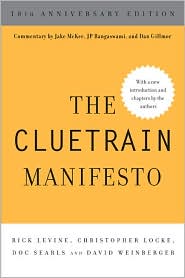February 16, 2020
Dutch national health insurance – probably not what you think
A Dutch friend wrote this up for a list I’m on, and kindly gave me permission to post it. It turns out that the Netherlands is to the left of Bernie and Warren when it comes to national health insurance.
Here are my friend’s comments.
The Netherlands has privatised all government health funds in 2006. They were regional organized and covered 65% of the population.
The remaining 35% had private health insurance. Partially coöps/non-profits and others for-profit.
Those 35% were higher incomes and/or self-employed and students without a (part-time) job.
The Netherlands doesn’t have Medicare. Elderly people have to purchase health insurance. We do have a mandate, and there are transfers to low income people, paid by a partial income related tax on the wages of working people.
In short, the Netherlands introduced the “Heritage Foundation Health Care System”. It was done by a center-right government who saw an opportunity to privatise the public health funds.
There are some interesting differences how The Netherlands implemented the “Heritage Foundation System” in comparison to RomneyCare and ObamaCare:
- Employer provided health insurance was grandfathered into an individual polis (you could keep it, but the employer went out of the system)
- There is a mandatory list called ‘basic insurance list’. Every insurer has to offer that list. It is the cheapest available.
- Contraceptive pills have been kicked off the ‘mandatory list’ by centre-right governments and put back on the list by centre-left. Currently they are off the mandatory list.
- Abortion is outside the mandatory list, except for medical necessity in hospitals
- There is a specialist ‘Pro Life Health Insurance’. No abortion, no euthanasia, no transgender operations, no in-vitro-fertilisation, no sterilisation and no morning after pill coverage etc. ample on palliative care and courses for natural family planning / counseling. When I drive on the highway through the Bible Belt, I see billboards for them.
- Pro-Life Insurance is also the health insurer promoted by the PCOB and KBO. The Protestant Christian and the Catholic associations for the elderly, both are mainline protestant and catholic social organisations. They cover a lot of elderly people with the insurance they negotiated for their members.
- The Netherlands has a ‘conscience clause’. Those who don’t want health insurance for religious reasons or any other personal belief, can call it in. The government then opens a health account and fills it with your health-tax payments. The account can only be used for paying health care/cure. If it is empty, your on your own. If there is still an amount when you die, it becomes part of your estate and goes to your heirs.
- If you want insurance, you relinquish your health account to the insurer of choice, but you cannot go back from insurance to the tax-authority filled health account.
As far as I understand it, Switzerland also made reforms toward a “Heritage Foundation health care system” in the 2000s.
And as a final note: keep in mind that the ‘hot button issues’ like contraception and inclusion/exclusion of abortion on the mandatory coverage list are political footballs here too.
There were 17 abortion clinics in the Netherlands. 7 went bankrupt in the early ’10s due to too low demand for their services. 4 were relaunched, so there are now 13 abortion clinics on a population of 17 million. California has ca. 150 clinics for ca. 40 million. I think only South-Carolina has a lower ratio in terms of Abortion Clinics per 1,000,000 women. Kansas and Missouri are more on par with the Netherlands.
In general, abortion policies are far stricter in Europe. The Netherlands isn’t much of an outlier in restrictive abortion policies, where restrictions kick-in after 13 weeks of gestation and a 5 working day “rethink period” with adoption counseling is mandatory. The big outlier in Europe is Great-Britain, which has abortion policies a lot like the USA. Northern-Ireland however is very strict, just like Ireland.
Off course this is far from China’s ‘one-child-policy’, where it was encouraged to have single-child families and abortion is easy accessible.
There are some intriguing points to make, about what went different.
- The USA didn’t grandfather private health insurance policies from employers to individuals and continued employer provided health insurance.
- As a result demand for the “ObamaCare exchanges” was much smaller
- Due to the existence of Medicare, untouched by ObamaCare, there wasn’t massive ‘insurance pool organisation’
- US Labor Unions still negotiate health benefits with employers instead of operating as the middleman towards health insurers c.q. owning a stake in a health insurance fund
- The absence of “Conscience Opt-Out” and “Pro Life Insurance”, combined with employer based health care, caused a Supreme Court case (Hobby Lobby) which forced a ridiculous decision that a corporate legal entity now can have a ‘religious conscience’
- This of course did extend to Catholic Nuns too, who were forced to pay for mandates that went against their beliefs.
It all smacked as incomplete design and as a result a set of flaws due to provisions not taken, probably because of political expediency.
Currently the Netherlands has 11 health insurance providers after a lot of M&A had happened. The interesting result is that the big winners have been
a. A rather high-end private insurer, offering expensive “we cover everything” policies
b. A former health fund which had worked in a blue-collar region (Delfland-Schieland-Westland), being the repeated price-breaker and as a result is now the darling of consumer organisations etc.
What is really different between the Dutch implementation and the USA, is the bargaining positions in the system. The collectives that sprang up (some spontaneously, around websites) and went shopping. It makes a difference when in a market of 17 million and 11 providers, someone shows up at your doorstep with ‘I have 200.000 signatories looking for a good insurance policy …’).








